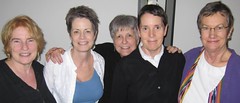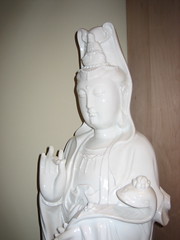Shunryu Suzuki once famously said, “In the beginner's mind there are many possibilities, but in the expert's there are few.” I can hardly claim Suzuki’s attainment or background with Zen, but if he is correct my own experience seems upside down. I started my Zen practice with very clear, singleminded ideas about practice drawn from my reading. I could have given you definitions and descriptions for
dharma, satori, samadhi, shikantaza, karma, no-mind, zazen, samsara, enlightenment, and
emptiness. I could clearly explain the four noble truths, the eightfold path, the 12-fold chain of causation.
Each of these concepts seemed well-defined, simple, and direct. There was only the straightforward matter of sitting in zazen until I became enlightened. And it was very clear that enlightened somehow meant whatever I was not. Zen masters were in short supply, but it was no problem: the important thing was to apply yourself wholeheartedly to the project of awakening—without, of course, any gaining idea.
The clarity and simplicity of what I knew about Zen was so compelling compared to the messy, confused, complex, and hapless life I was otherwise living. There was a single-mindedness about the discipline of zazen, and the path had a clear direction and goal. If only I could transcend the messiness of this human body, these unpredictable emotional storms, the incomprehensible tangle of relationships, and the tedious clutter of work in my life! As a novice, I was drawn to the single possibility offered by Zen, the “leap beyond the many and the one,” the single moment of liberation that would suddenly and magically transport me into the bliss of belonging, the wisdom beyond critique, the compassion that could save the world.
Forty-three years later I can only say, expert or no, that the practice has utterly confounded me with its myriad possibilities, its timeless unfolding as “branching streams,” its endless variety and openness. It is more and more obvious to me that dharma gates truly are boundless, that the dream of awakening is just that—a dream, that there is literally nothing whatsoever that is not part of this path, a path without any clear direction beyond the very next step. There is nothing except awakening being realizing itself—in a moment or over aeons, no real difference.
As the Buddha put it in the Lotus Sutra, “Now I am revealing a deeper truth—that the path, the teachings, the practice, is much larger than I indicated before—in fact it is infinite in scope, limitless, because beings are infinite and limitless. Although I defined it before, in truth the path cannot be defined. No ordinary person could possibly know it, for it is beyond all knowing.”
Beings are infinite and limitless: the possibilities are boundless. Is this a beginner's view?





